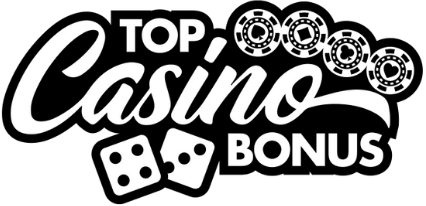How to spot a card counter
Most folks walking into a live casino think spotting a card counter is about catching someone with a photographic memory or who’s slyly whispering ace tallies to their buddy. That’s the Hollywood version. In real life, it’s more like catching a craftsman working their tools, subtle, methodical, disciplined. You’ve gotta know what to look for because counters aren’t breaking the law; they’re outthinking the game, but casinos still show them the door.
Table of contents
Why card counting matters to the house
The whole house edge at blackjack dances delicately on the assumption that players don’t know what cards are left in the shoe. When someone starts tracking it, legally, mind you, it tips that balance. Advantage players can swing the long-term numbers enough to carve out a consistent profit, which makes them poison to the bottom line and unwanted guests at any serious pit.
Understanding the edge and its erosion
Most blackjack tables run with a house edge of about 0.5% if you’re playing basic strategy. But a skilled counter can flip that, gaining a 1-2% edge instead. That might not sound like much, but over hundreds of hands with calculated bet spreads, that’s money walking out the front door, stone cold profit turned into player payouts.
What untrained eyes miss at the table
Newer pit bosses or floor managers often mistake flamboyant behavior for hustle. But the best counters won’t stick out. They’re neat, quiet as a whisper, sharper than a straight razor. You’ve gotta rely on behaviors and patterns, not flashiness, if you’re going to root them out.
Deck penetration interest
Counters thrive on deep deck penetration, meaning more cards dealt before the shuffle. If someone’s paying a little too much attention when six decks get burned down below a third, take notice. That’s where the counting gets rich. Real pros know that any extra card adds juice to the count’s accuracy.
Common behavioral clues of a counter
There’s no blinking sign that says “Hey, I’m counting!” but specific behavioral patterns light a trail for those who know the dance. It’s not about catching someone peeking; it’s about recognizing rhythms that don’t match the recreational flow.
Bet spread irregularities
This is your top red flag. Counters increase their bets when the count favors high cards, aces and tens. They’ll sit on minimal bets for long stretches, then suddenly ramp up when the deck’s rich. A typical recreational player doesn’t show that kind of patience or consistency. If someone swings from $10 to $200 in perfect alignment with potential player advantage, that’s a signal flare.
Mid-shoe entry and exit
A crafty counter might jump in only when a fresh high count deck presents itself, especially in crowded or casual tables. They’ll leave when the count swings south. While some players do this out of boredom, a repeated pattern of selective playing is worthy of scrutiny.
Team dynamics
Split-apart teams are a classic approach. You’ve got the “spotter” playing small bets and tracking the deck, subtly signaling a hidden “big player” when the count is heavy. These big wagers will seem random if you’re not watching the larger pattern, which can extend beyond one table or even one shift.
Subtle tells for the trained eye
More nuanced spotting involves subtle player habits. Noticing these comes only after years in the pit, when intuition sharpens up from hundreds of hours watching players grind.
Strategic perfection
A flawless strategy isn’t common among regulars who treat blackjack like slots with cards. But a counter often plays basic strategy like a textbook because it minimizes house edge. No hot-headed splits. No sentimental hits. Just ice-cold moves aimed at forging statistical advantage. A player who never waivers might be too good.
Deviations aligned with count shifts
Now this one’s gold. When someone deviates from standard strategy, like standing on a hard 16 against a 10, and it matches a correlated high count, they’re tipping their hand. To the untrained eye, it’s a risky move. To those who know about implied odds and calculated risk, it’s methodical advantage play in disguise.
Modern challenges: Tech-savvy counters and digital tables
Online blackjack and electronic tables add a new twist. While deck penetration becomes moot thanks to continuous shufflers, some ambitious grinders try to exploit RNG patterns or use bots. Casinos now use AI and analytics to sniff out suspicious win rates. But nothing replaces the sharp eye of an old-school observer who understands rhythm and intent.
The payment footprint
Another tell is how a player manages deposits and withdrawals in online settings. Many counters use evasive or anonymous Paysafecard methods to stay off the radar and dodge account linking. Others use Skrill or Trustly Instabank for quick ins and outs, often coordinating with multiple player accounts, sometimes linked loosely. Casinos keep an eye on deposit fizzing patterns, especially if the preferred method differs from mainstream players using Visa.
Spot, don’t accuse
If there’s one rule I share with every fresh pit boss, it’s this: suspicion isn’t proof. Spotting a counter isn’t the same as catching one cheating, they’re not sliding cards up their sleeves. You’re identifying advantageous behavior. So the goal isn’t to strip them bare, but to manage the risk discreetly, lower deck penetration, restrict bet limits, shift dealers.
The value of watchfulness
In most cases, a gentle countermeasure works better than confrontation. Rotate shoes more frequently, place known counters at shuffler-only tables. Keeping a game fair but house-favored is the essence of smart casino management.
Everything is in the details
Spotting a card counter is a lot like gold panning. Most of what you see is noise, luck, and ordinary shine. But once in a while, amidst the hustle, you’ll spot that glint, the cold, steady hand on chips, the watchful silence, the brain always ticking. That’s the real deal. Train your eyes, know your math, and trust your gut. The grinder with a plan is rarely playing for fun.





0 Comments